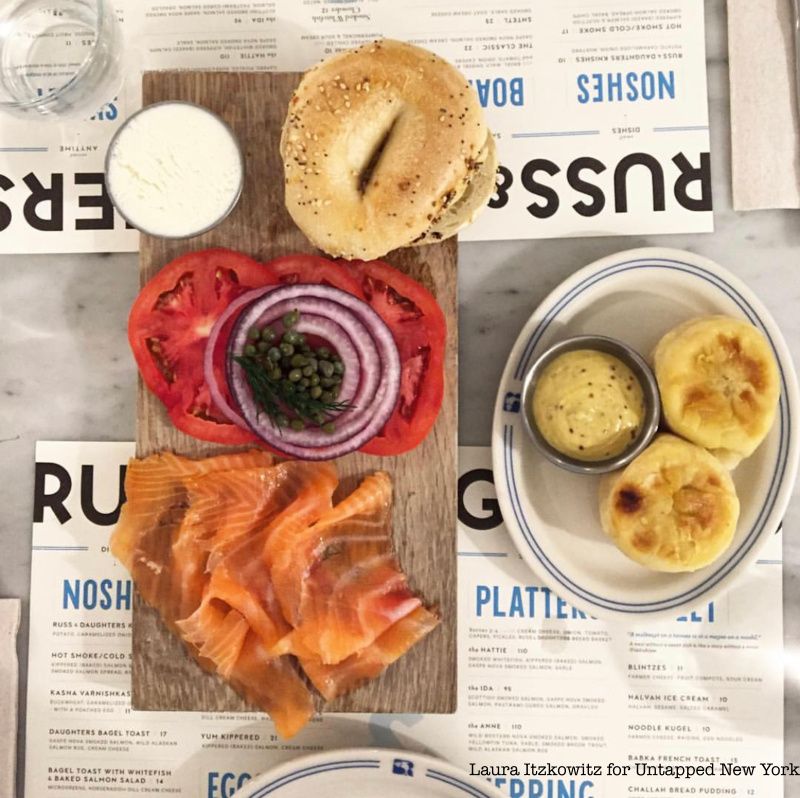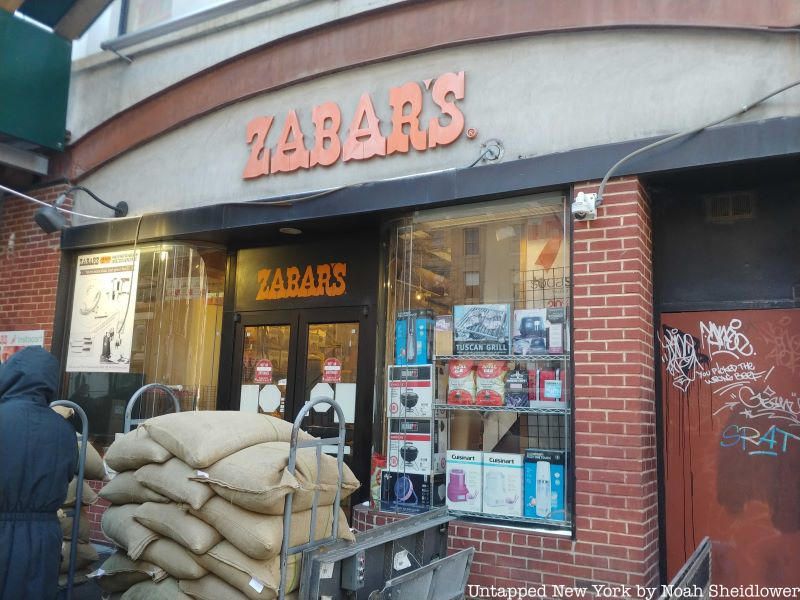100th Anniversary Great Nave Tour at the Cathedral of St. John the Divine
Celebrate the 1925 construction of the stunning nave inside the world's largest Gothic cathedral!


When most New Yorkers think of “Jewish cuisine,” many immediately think of the Jewish deli. Names like Katz’s and Second Avenue Deli likely stick out for both tourists and locals, and the famed pastrami sandwich and matzoh ball soup have become staples of Jewish foodways over the past century. Developing around the same time as the deli, though, is the appetizing store, very few of which still exist in New York today.
Appetizing stores, often owned and operated by Ashkenazi Jews, sell foods that quite simply go with bagels or other bread. These include smoked and pickled fish, spreads like whitefish, pickled vegetables, and cream cheese. Appetizing stores serve only dairy for the most part, as kosher law prohibits dairy and meat from being consumed together. This is why appetizing stores were seen as complementary to delis, which served only meat. Like the Jewish deli, appetizing stores reached their heyday in the early 1900s, and today there are just over a dozen in New York City.
Like the birth of the Jewish deli, little is known about exactly when these stores started popping up. The term “appetizing” may stem from cold appetizers eaten in traditional meals back in Eastern Europe, although this has been disputed by scholars who noted how foods such as lox would have been new to European immigrants. The first appetizing stores opened in the late 1800s, and they achieved popularity with the huge wave of Jewish immigration in the early 1900s. Many Jewish immigrants were particularly drawn to smoked fish because it required minimal preparation and refrigeration, which was necessary for many who worked long hours and lived in tenements.

One of the first major appetizing stores to open was Barney Greengrass, which originally opened in Harlem in 1908 and moved to its current location along Amsterdam Avenue in 1929. Greengrass was often referred to as the “Sturgeon King,” although the store also served Nova Scotia salmon, whitefish, and other smoked fish. According to Gary Greengrass, the store’s current owner, Barney opened it as a “food store for those who demand the best.” A restaurant section was added in 1938, and a year later the store shipped an order of smoked sturgeon to President Franklin D. Roosevelt. Barnie passed away in 1955, after which his son Moe took over.
Just six years after Barney Greengrass opened, the iconic Russ & Daughters opened its doors in 1914. In 1907, Joel Russ immigrated from Strzyzow in modern-day Poland, after which he sold schmaltz herring out of a barrel on the Lower East Side. It took his first seven years to transition to a pushcart operation, a horse and wagon, and ultimately a brick and mortar store on Orchard Street. In 1920, he moved the store to its current home of 179 East Houston Street. His daughters Hattie, Ida, and Anne were involved in the business from a young age, and in 1935 Russ changed the name to include “& Daughters,” controversially making it the first business in the country with that included.
In 2009, cousins Josh Russ Tupper and Niki Russ Federman took over the business as fourth-generation owners. The wall still includes some dishes not served for decades, such as smoked ell and kapchunkas (strings of whole dried whitefish with the guts still inside). Russ & Daughters Cafe opened on the 100th anniversary of Russ & Daughters. In 2016, they opened a café inside the Jewish Museum and later added an 18,000-square-foot bakery and appetizing store inside the Brooklyn Navy Yard.

By the 1930s, there were approximately 500 appetizing stores open in New York City. Zabar’s, the beloved Upper West Side appetizing store known for its bagels, smoked fish, and olives, opened in 1934. The Lower East Side alone had over 30, and the Upper West Side was another popular destination. Appetizing stores, though, were found in every borough and were quite prominent in Jewish sections of Brooklyn as well. Stores competed with one another over which had better quality fish, superior smoking techniques, and tastier pickling. Appetizing stores also often served as bakeries, offering sweets like rugelach and babka. Most of the stores’ clientele was indeed Jewish, though this has changed more recently. The 1968 publishing of Milton Glaser’s “Gentile’s Guide to Jewish Food: The Appetizing Store,” which appeared in New York Magazine, also contributed to the rise in popularity of the appetizing store.
Many of these stores held on until the 1950s, though many started to close as owners retired and did not pass the stores onto their children. Supermarkets also began selling smoked fish and other dairy products, which rendered many appetizing stores obsolete. Murray’s Sturgeon Shop, currently located on the Upper West Side, was one of the latest to open, founded by Murray Bernstein in 1945. The Bernstein family moved to the U.S. in the 1930s to escape antisemitism, and the store has for nearly eight decades served favorites such as smoked sturgeon and caviar.
Though the New York bagel remains a staple, the appetizing store died out as supermarkets expanded and overall interest in the cuisine lessened. Like the Jewish deli, the numbers dwindled for the next few decades. However, there has been a slight revival of the appetizing store recently. Shelsky’s was the first to open in Brooklyn in 60 years when it launched in 2011 in Cobble Hill. Shelsky’s was opened to bring a taste of old-fashioned Jewish cooking to Brooklyn, where the appetizing store had essentially become a relic of the past. Additionally, Black Seed Bagels first opened in 2014, pulling from Montreal culinary traditions. And in 2016, brothers Zach and Alex Frankel, who grew up on the Upper West Side, opened Frankel’s Delicatessen & Appetizing, which became an instant hit among the hipsters of Greenpoint. These appetizing stores join the ranks of Sable’s Smoked Fish, Sadelle’s, Baz Bagel & Restaurant, and Zucker’s Bagels & Smoked Fish as some of the last remaining appetizing stores in New York.
Next, check out The History of the Jewish Deli in NYC!
Subscribe to our newsletter